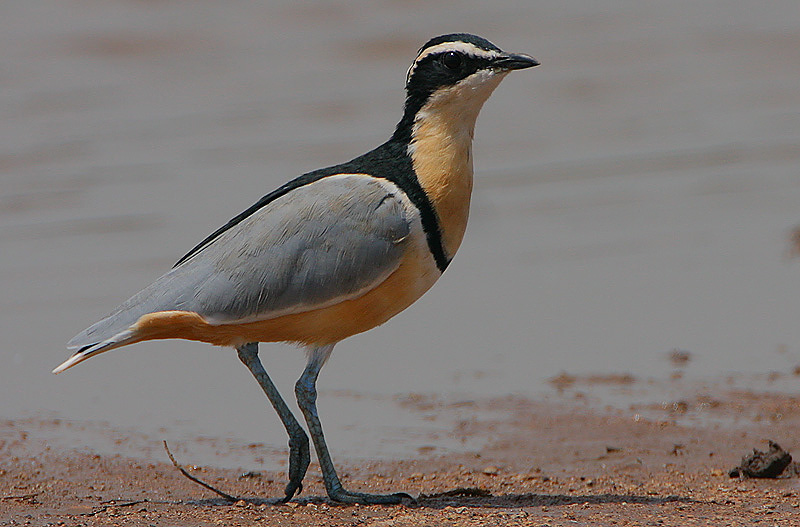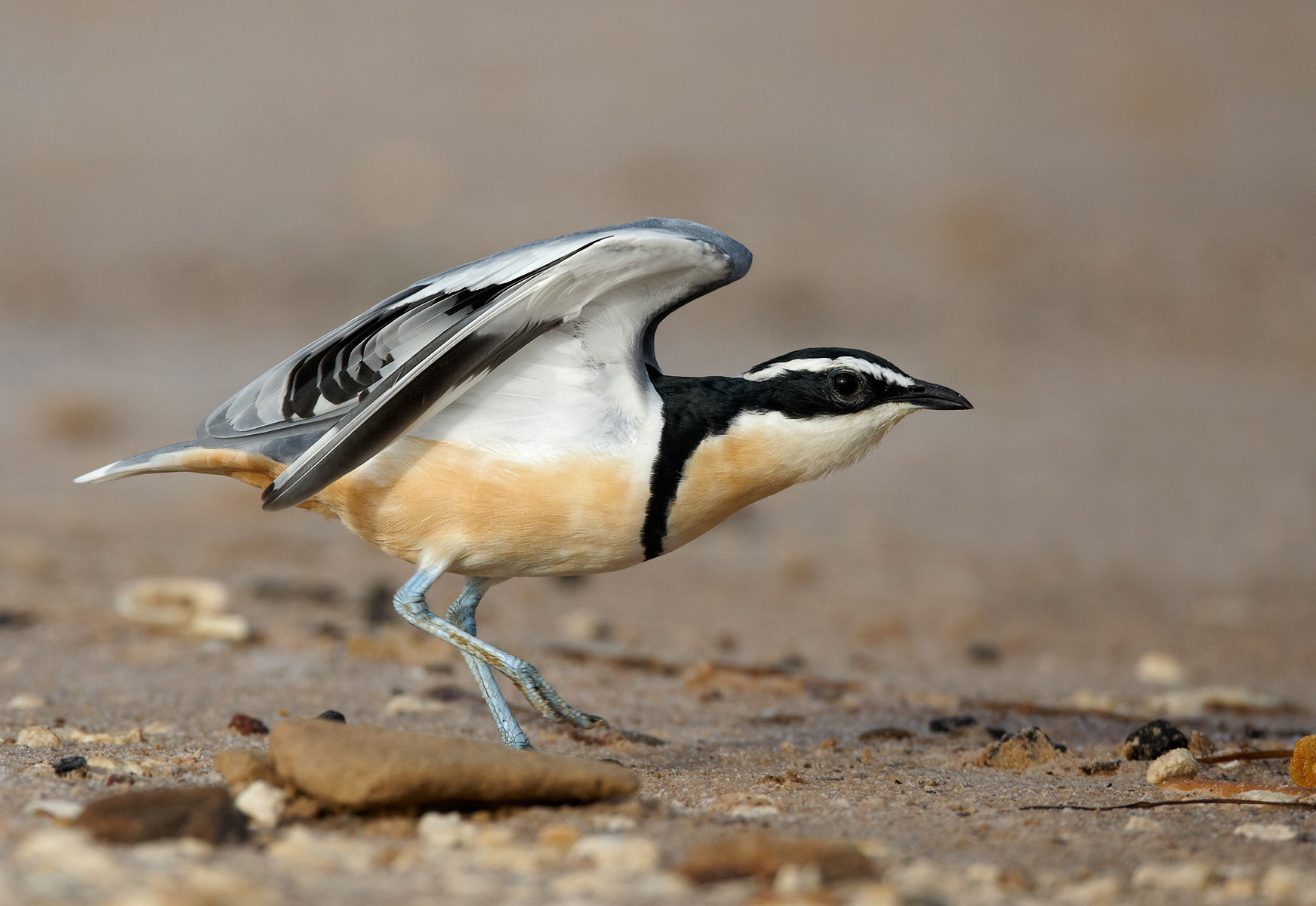
Pluvianus aegyptius
SUBFAMILY
Cursoriinae
TAXONOMY
Pluvianus aegyptius Linnaeus, 1758, Egypt. Monotypic.
OTHER COMMON NAMES
English: Crocodile bird, Egyptian courser; French: Pluvian fluviatile;
German: Krokodilwдchter; Spanish: Pluvial.
PHYSICAL CHARACTERISTICS
7.5–8.3 in (19-21 cm); 2.6–3.2 oz (73–92 g). Small, plover-like,
with gray back, buff underparts and boldly marked black and
white head-and-neck pattern.
DISTRIBUTION
Tropical Africa from Senegal to Ethiopia, and south to Angola
and Congo (Zaire).
HABITAT
Major lowland rivers with sand and gravel bars.
BEHAVIOR
In pairs when breeding, but may form flocks of up to 60 birds
when moving about according to changes in water level.
FEEDING ECOLOGY AND DIET
Feeds on invertebrates, mainly insects, caught by running after
prey on ground or by a leap into the air; may also probe and
scratch in damp sand for food.
REPRODUCTIVE BIOLOGY
Breeds mostly in dry season when river levels low. Lays two to
three eggs in deep scrape in sand, incubating eggs in partly
buried position for 28–31 days. Eggs may be wetted with
soaked belly plumage in hot weather. Chicks leave nest as soon
as hatched, but may be buried in sand by parents when disturbed;
parents may wet sand over chicks in the heat of the
day. Young fly when about five weeks old.
CONSERVATION STATUS
Common in suitable habitat, but some populations may be
threatened by damming of rivers. No longer occurs in Egypt,
where first described, so numbers may be dropping in parts of
range.
SIGNIFICANCE TO HUMANS
None known.
Photo Gallery of - Egyptian plover




 Animalia Life
Animalia Life